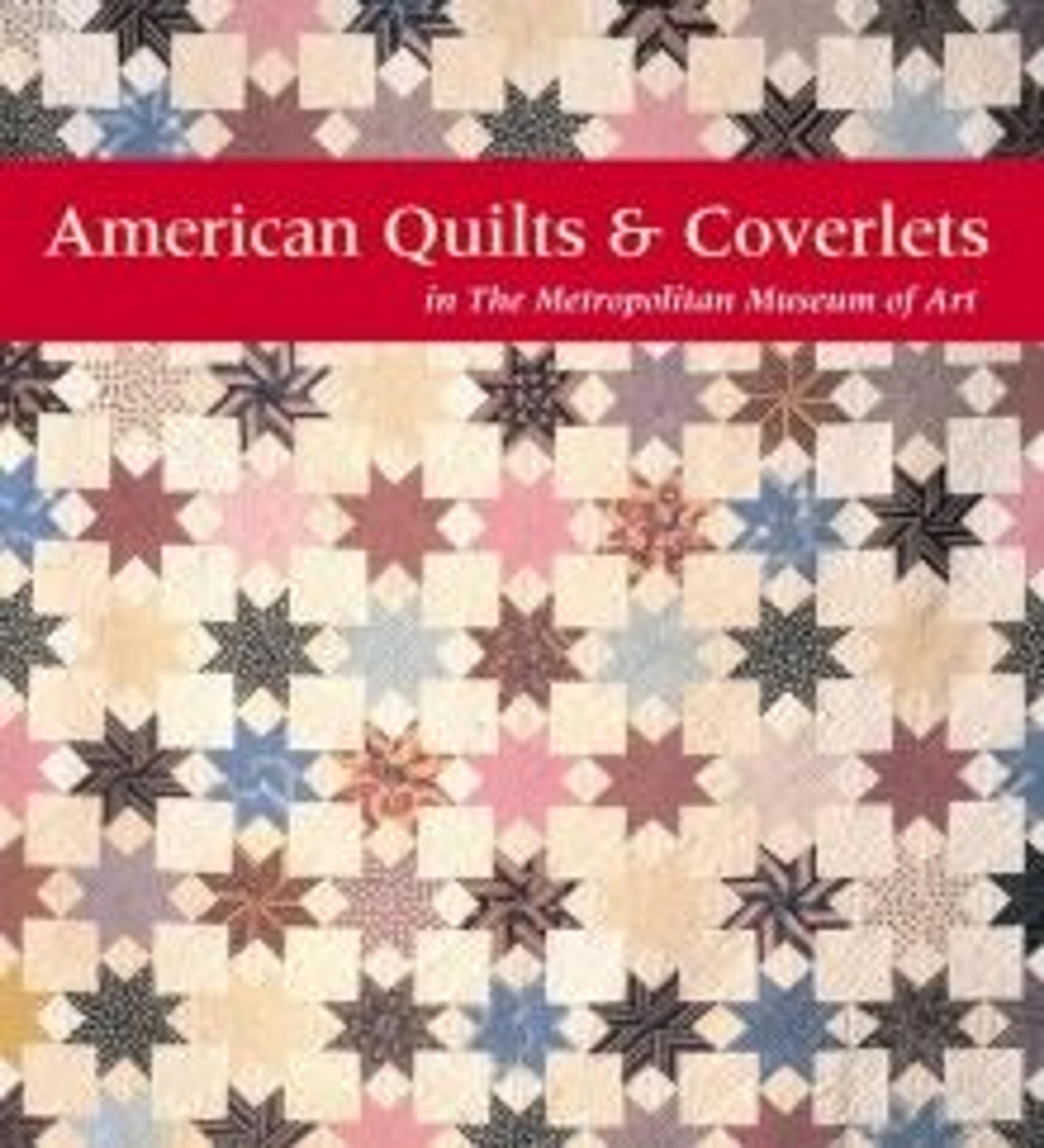Nine Patch Quilt
It is believed that Anna Ruddick made both the unsigned Log Cabin crib quilt (1976.198.2) and this signed Nine Patch quilt. The fabrics used to construct it can be dated to the 1870s, the period when Anna would most likely have sewn it. Although not as beautifully made as the one in the collection by her mother, Susan Reed Ruddick (1976.198.1)--it must be kept in mind that Anna was only eight years old when she pieced together this quilt. Yet, it is obvious that she looked to her mother’s quilt for inspiration. Anna’s mother died twelve days after giving birth to her in 1869 and subsequently, Susan’s mother, Elvina Reed, moved to Monticello, New York to take care of her granddaughter. She remained there until Anna’s father, John Ruddick, remarried in 1881.
Since it was probably Elvina Reed who directed both Susan and Anna in the making of their quilts, it is not surprising that the two objects are similar. Both are constructed of blocks with a border on three sides. The fourth edge of each quilt is signed and dated in letters made up of small appliquéd squares that simulate pieced work. The large scale of the signatures is unusual; it is more common to see an inscription of this size on the embroidered blankets and whitework coverlets of the early nineteenth century. Elvina probably learned to sew during that period and passed on the style of the earlier era to her daughter and granddaughter.
Although we have Anna Susan Ruddick's photograph, we know little about her life. She was married at the age of twenty-four to Stephen Trowbridge, the owner of a very successful lumber business that still exists in Monticello. They had three children: Ruddick Trowbridge, who was a machine gunner in World War I and was killed in action in France in 1938, Sherwood "Hop" Trowbridge, and Louise Trowbridge Hamilton. Louise had no children to inherit the family quilts; they were sold in an estate sale that took place after her death, and their purchaser eventually donated them to the Museum.
Since it was probably Elvina Reed who directed both Susan and Anna in the making of their quilts, it is not surprising that the two objects are similar. Both are constructed of blocks with a border on three sides. The fourth edge of each quilt is signed and dated in letters made up of small appliquéd squares that simulate pieced work. The large scale of the signatures is unusual; it is more common to see an inscription of this size on the embroidered blankets and whitework coverlets of the early nineteenth century. Elvina probably learned to sew during that period and passed on the style of the earlier era to her daughter and granddaughter.
Although we have Anna Susan Ruddick's photograph, we know little about her life. She was married at the age of twenty-four to Stephen Trowbridge, the owner of a very successful lumber business that still exists in Monticello. They had three children: Ruddick Trowbridge, who was a machine gunner in World War I and was killed in action in France in 1938, Sherwood "Hop" Trowbridge, and Louise Trowbridge Hamilton. Louise had no children to inherit the family quilts; they were sold in an estate sale that took place after her death, and their purchaser eventually donated them to the Museum.
Artwork Details
- Title:Nine Patch Quilt
- Maker:Anna Susan Ruddick Trowbridge (1869–1949)
- Date:1877
- Geography:Made in Sullivan County, Monticello, New York, United States
- Culture:American
- Medium:Cotton
- Dimensions:83 1/4 x 73 1/4 in. (211.5 x 186.1 cm)
- Credit Line:Gift of Mrs. William Rhinelander Stewart, 1976
- Object Number:1976.198.3
- Curatorial Department: The American Wing
More Artwork
Research Resources
The Met provides unparalleled resources for research and welcomes an international community of students and scholars. The Met's Open Access API is where creators and researchers can connect to the The Met collection. Open Access data and public domain images are available for unrestricted commercial and noncommercial use without permission or fee.
To request images under copyright and other restrictions, please use this Image Request form.
Feedback
We continue to research and examine historical and cultural context for objects in The Met collection. If you have comments or questions about this object record, please contact us using the form below. The Museum looks forward to receiving your comments.
